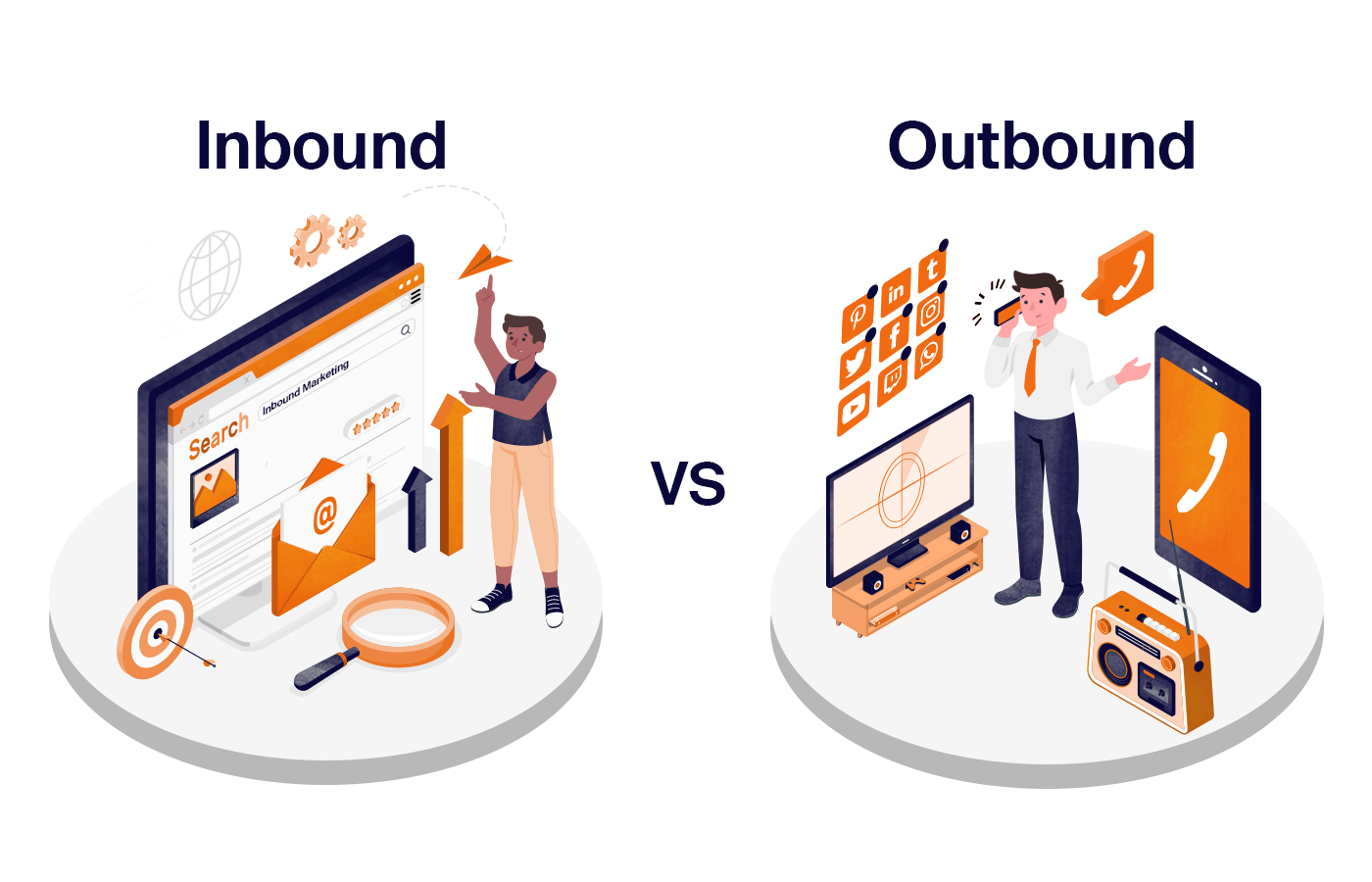Diving into the realm of Digital Leads, it’s crucial for organizations seeking online prominence and sustainable growth in the dynamic landscape of digital marketing. With over a decade of experience in this evolving field, let’s delve into the disparities between inbound and outbound leads, highlighting how each technique can benefit your organization.
Inbound and Outbound Digital Lead Definitions:

Inbound Digital Leads:
Inbound leads are prospects who find your company organically, based on their own needs and interests. This customer-focused strategy stresses the creation of valuable content that attracts and engages the target audience. Content marketing, search engine optimization (SEO), social media marketing, and email marketing are all examples of inbound marketing tactics.
1. Content Marketing: The creation and dissemination of relevant, useful, and valuable information is at the heart of inbound lead generation. This material can take many different formats, including blog articles, ebooks, movies, and infographics. By creating content that meets your target audience’s pain areas and interests, you present your business as a valuable resource.
2. Search Engine Optimization (SEO): SEO is the foundation of inbound marketing. Search engine optimization guarantees that your content ranks higher in search results, making it easier for potential consumers to find you. Keyword research, on-page SEO, and quality backlinks all play important roles in increasing the exposure of your website.
3. Social Media Marketing: By utilizing social media platforms, you may connect with your target audience on a more personal basis. You may create a community around your business by sharing material and engaging in conversations, establishing trust and loyalty among potential customers.
4. Email Marketing: Email marketing is still an effective technique for nurturing leads. Inbound leads frequently sign up for newsletters or downloaded content, which allows you to establish a direct line of communication with them. Leads can be guided through the sales funnel with personalized and targeted email messages.
Outbound Digital Leads:
Outbound leads, on the other hand, constitute a more aggressive method in which organizations contact potential clients directly. Outbound marketing encompasses traditional advertising strategies such as cold calling, direct mail, and paid advertising.
1. Cold Calling: Cold calling entails contacting potential clients who are unfamiliar with your brand. While cold calling takes a professionally developed script and an appealing approach, it can provide valuable leads.
2. Direct Mail: Despite the digital age, direct mail is still an effective outbound tactic. Sending physical marketing materials to a specific demographic might help to catch attention and establish a physical connection.
3. Paid Advertising: Paid advertising channels include Google Ads, social media ads, and display advertising. While it does need a financial investment, it delivers immediate visibility to a large audience, improving the likelihood of acquiring potential buyers.
Choosing Between Inbound and Outbound Leads:
1. Cost-Efficiency: Inbound leads are frequently more cost-effective over time, as the initial investment in content generation and SEO generates organic traffic. Outbound leads may necessitate a larger initial cost, particularly in paid promotion.
2. Trust and Credibility: Because customers actively seek out your content, inbound leads are built on trust and credibility. Outbound leads may experience early mistrust, necessitating additional effort on the part of enterprises to build confidence.
3. Long-Term vs. Short-Term Results: Inbound leads help with long-term sustainability because quality content attracts leads over time. Outbound leads can bring more rapid returns, but they may necessitate continual commitment to ensure long-term success.
4. Customer involvement: Through valuable content and community building, inbound marketing encourages customer involvement. Outbound marketing frequently relies on one-time encounters, making long-term involvement more difficult.
Conclusion:
The choice between inbound and outbound leads in the changing world of digital marketing is determined by the type of your organization, target audience, and marketing goals. A well-balanced approach that combines components of both tactics can result in a comprehensive and effective marketing effort. Staying nimble and modifying your strategy will be critical in managing the ever-changing digital landscape as technology changes and consumer behaviors vary.
Read Also:- 10 Dynamic Steps to Skyrocket Your Digital Marketing Career
Read Also:- 6 Dynamic Digital Marketing Careers
Read Also: – Top 8 Most Wanted Digital Marketing Skills in 2024
Best and reliable Hosting for your website:- Hostinger
Get Your Website Build Here:- Wpdeveloperz.com


